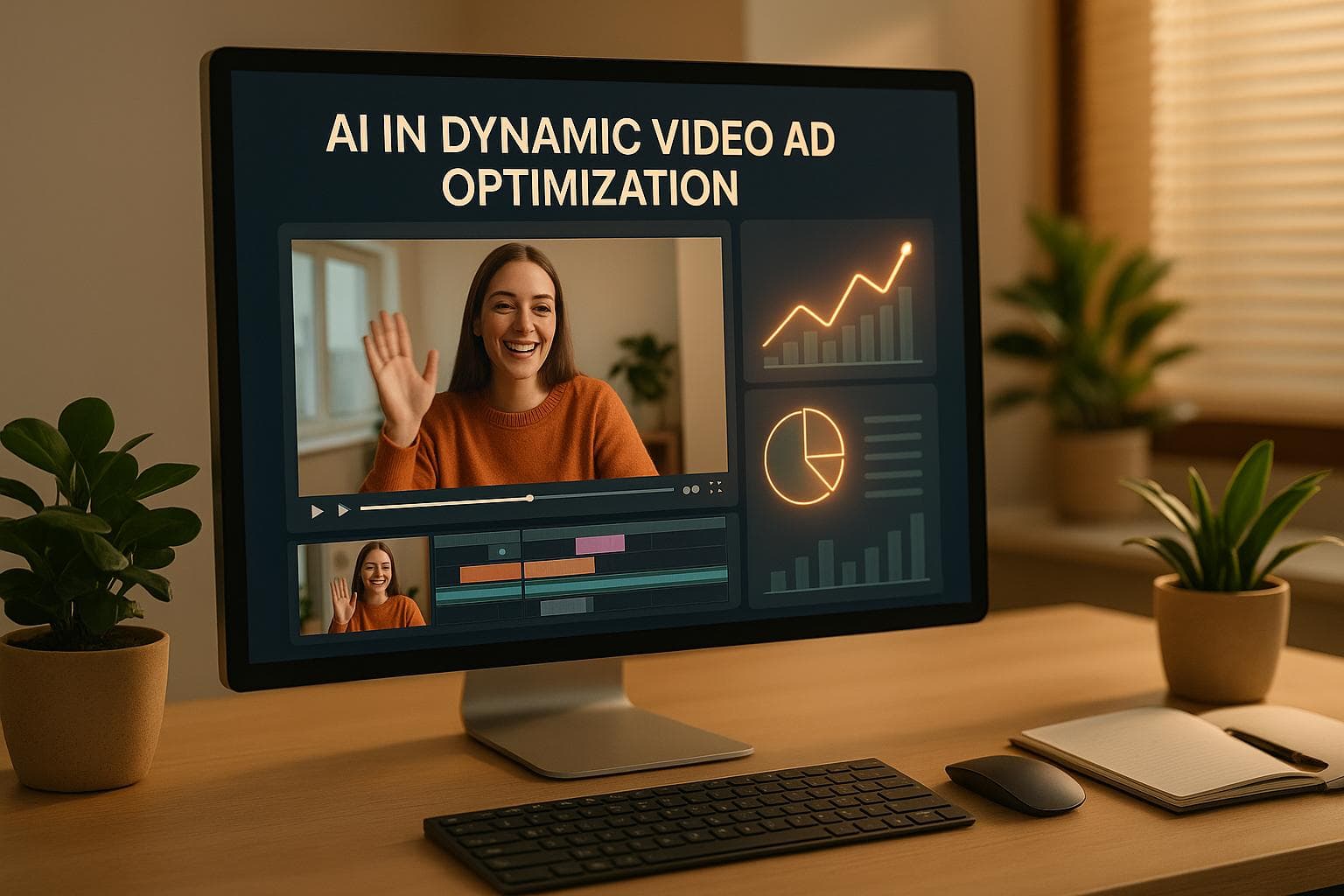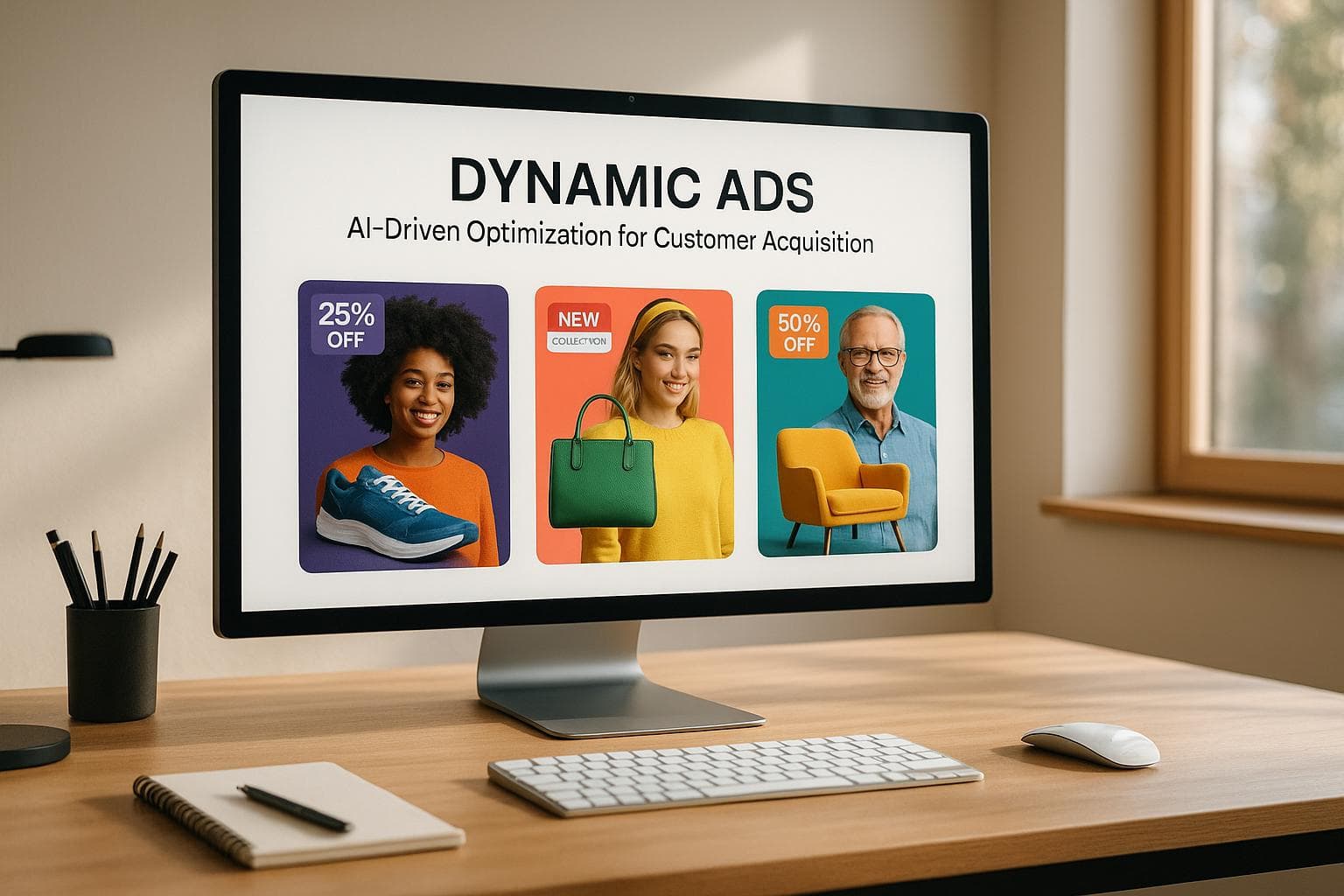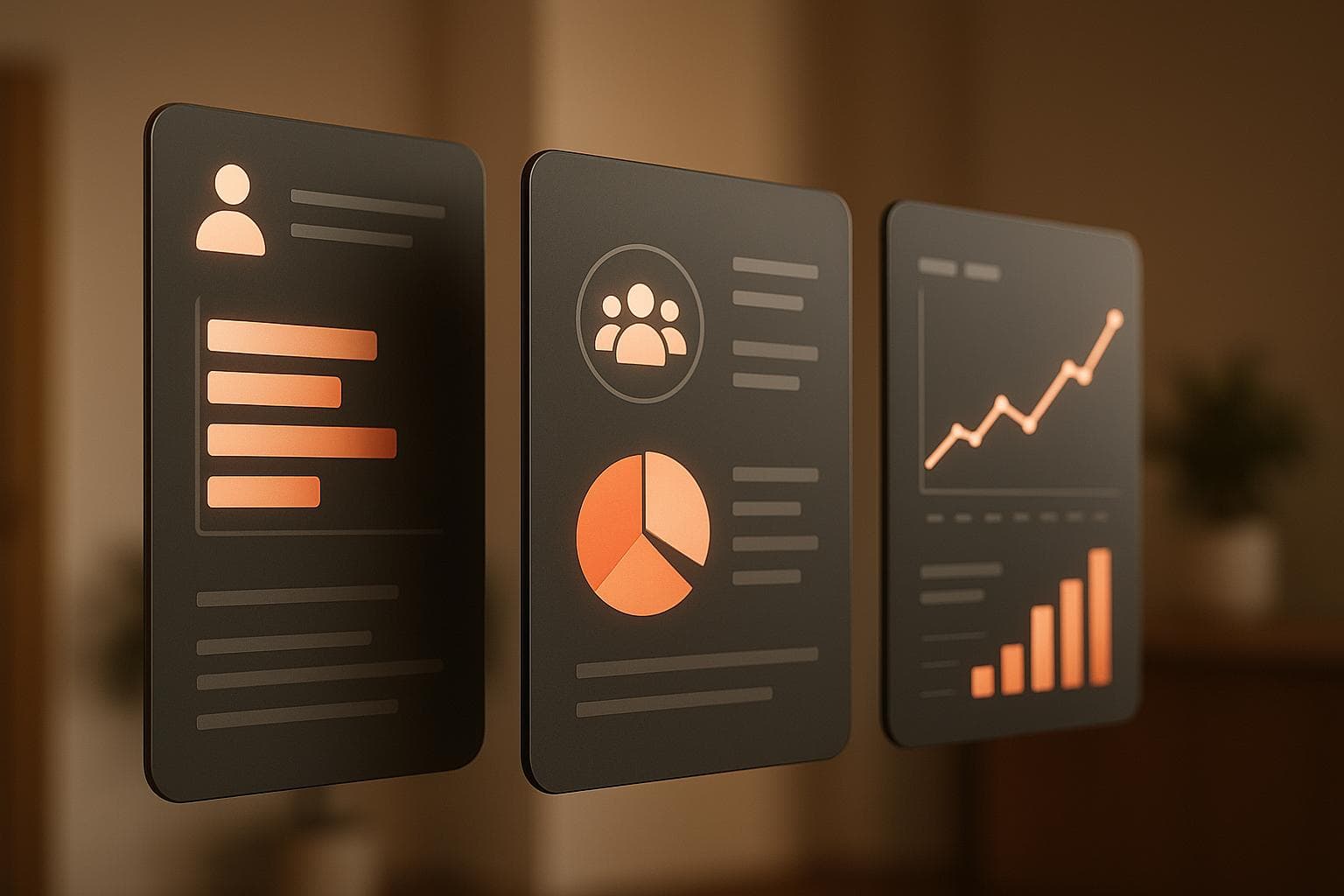AI in Dynamic Video Ad Optimization
Explore how AI transforms video ad optimization with personalized campaigns, real-time adjustments, and higher ROI compared to traditional methods.
AI is changing how businesses approach video advertising. It allows companies to create personalized, data-driven ad campaigns that adjust in real time. Unlike older methods, which rely on broad audience categories and manual updates, AI uses user behavior and campaign performance to deliver tailored ads quickly and at scale.
Here’s what makes AI-driven video ads stand out:
- Personalization: Ads are customized based on individual behavior, not just broad demographics.
- Speed: AI launches and refines campaigns in real time, saving weeks compared to manual methods.
- Precision: Micro-segmentation ensures ads reach the right audience at the right time.
- Higher ROI: Businesses report up to 18% better returns by switching to AI-powered strategies.
Platforms like Feedcast.ai make it easy for businesses to implement these solutions, automating ad creation, targeting, and analytics. While AI has some challenges, like reliance on quality data, its ability to boost engagement and lower costs makes it a game-changer for e-commerce advertising.
AI Video Enhancements: Level Up Your Ads Campaigns | Google Ads Help
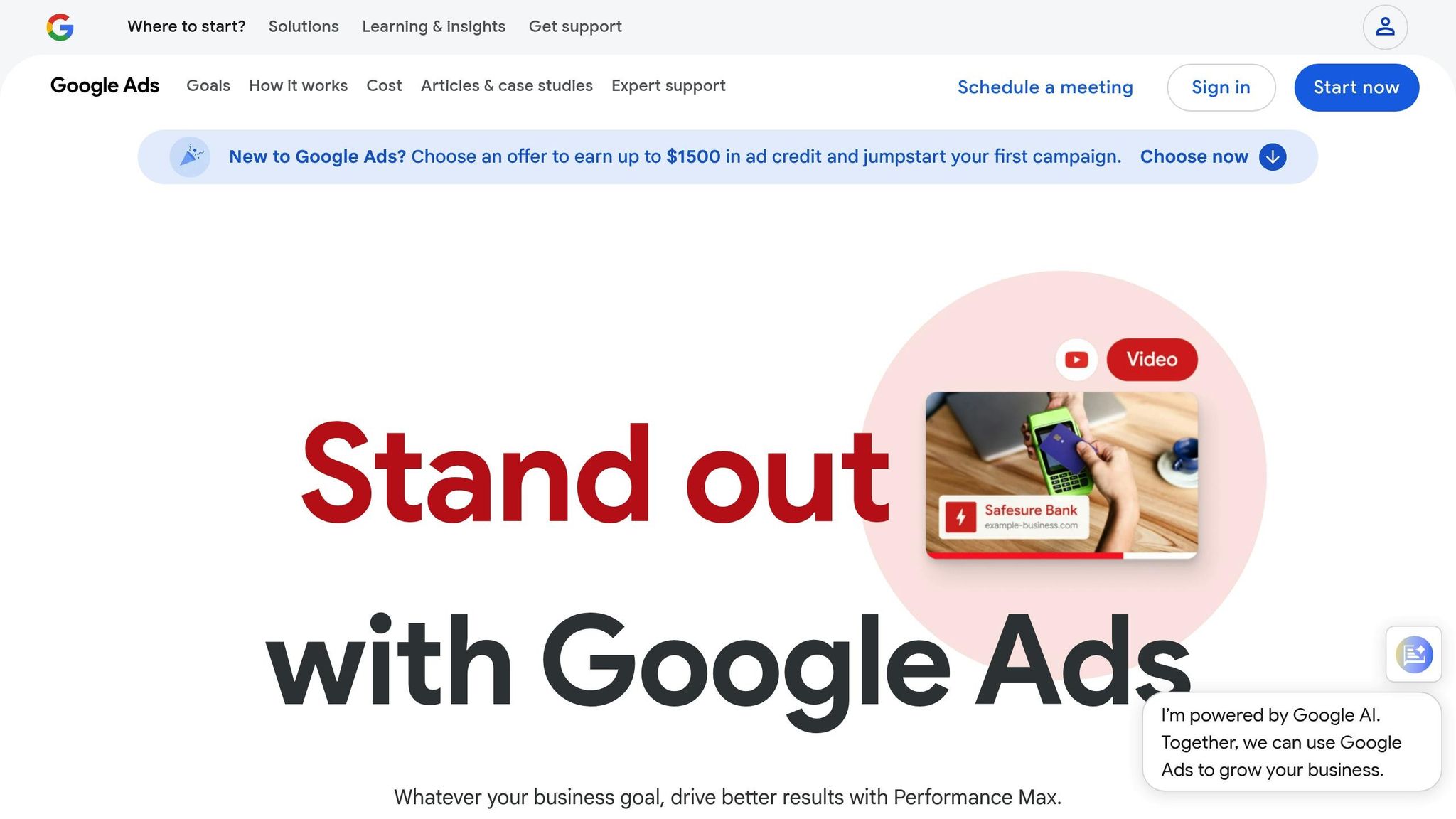
1. Traditional Dynamic Video Ad Optimization
Traditional dynamic video ad optimization has been a cornerstone of digital advertising for years. However, as consumer expectations grow and technology advances, this approach is increasingly showing its age. Relying on manual processes and rule-based systems, these methods often fall short in meeting the demands of today’s fast-paced digital world.
Personalization
When it comes to personalization, traditional methods take a broad-strokes approach. Instead of targeting individuals, marketers segment audiences into general categories based on age, gender, location, or interests. For example, a 25-year-old college student and a 25-year-old working professional might receive the same ad simply because they share an age group.
The creative process typically involves using pre-designed video templates, which marketers tweak for each segment. While this method provides some level of customization, it doesn’t deliver the kind of tailored experience modern consumers expect. Adding to the challenge, each variation must pass through a slow, manual review process, creating delays that make it hard to keep up with shifting viewer preferences.
Speed and Scalability
One of the biggest challenges with traditional optimization is the time-intensive setup. Configuring segments, creative assets, and targeting rules for a campaign can take weeks - or even months - especially for complex, multi-platform initiatives.
This manual approach also slows down A/B testing, leaving marketers waiting for statistically significant results before making adjustments. During this lag, campaigns often underperform. Scaling up to larger or more diverse audiences compounds the problem, as each new segment requires additional time and resources for setup and optimization.
Creative production becomes another major hurdle. For instance, if data shows that younger audiences prefer shorter videos, creating, testing, and deploying new assets through traditional workflows can take weeks. By the time these changes are implemented, the opportunity to engage peak audiences may have already passed.
Targeting Precision
Traditional systems rely on fixed rules and historical data, which significantly limits their ability to deliver precise targeting. Marketers define audience segments based on demographic and behavioral data, but these segments are often too broad to create truly relevant ad experiences.
This static, rule-based approach means campaigns can’t adapt to real-time changes in user behavior or market conditions. For example, if a trending topic captures consumer attention, traditional systems lack the agility to adjust quickly. The result? Wasted impressions and lower engagement, as ads are served to people who may not be interested in the product or service.
ROI Potential
The inefficiencies of traditional optimization methods directly impact return on investment (ROI). According to eMarketer, brands using these methods typically see up to 18% lower ROI compared to campaigns that dynamically adapt creative formats in real time [2][3].
Slow optimization cycles are a major culprit. Campaigns often run suboptimally for extended periods while marketers analyze data and make manual adjustments. This delay can lead to ad fatigue, as the same creative assets are shown repeatedly, even after their effectiveness wanes. Additionally, manual budget adjustments struggle to keep up with performance trends, missing opportunities to allocate resources to high-performing segments or pause underperforming ones.
Martech thought leader Carla Johnson emphasizes, "the ability to adapt creative in real time transforms campaigns from static billboards into living conversations with your customers", highlighting the shortcomings of static, rule-based approaches [1].
While some marketers attempt to improve results by refining audience segmentation and frequently updating creative assets, these efforts require significant manual work. Even with these adjustments, traditional methods often fail to match the speed and precision demanded by modern advertising.
The inefficiencies of these traditional approaches underscore the need for AI-driven solutions that can overcome these challenges.
2. AI-Driven Dynamic Video Ad Optimization
AI-driven dynamic video ad optimization is reshaping the way businesses create and manage video campaigns. By leveraging machine learning and real-time data, these systems can produce and fine-tune ads at a pace and scale that traditional, manual methods simply can't compete with.
Personalization
AI takes personalization to the next level by going beyond broad demographic groupings. Instead of targeting all 25-year-olds with the same ad, AI analyzes individual behaviors like browsing habits, purchase history, and engagement patterns. This allows for highly tailored ad experiences. For example, e-commerce platforms can automatically create video ads featuring products a user recently viewed or items similar to their past interests.
Platforms like Feedcast.ai make this process seamless, generating hundreds of video variations from just one product URL. These variations are continuously tested and refined based on user interactions, enabling automated campaign scaling with minimal effort. This level of personalization goes far beyond traditional segmentation, creating ads that truly resonate with individual users.
Speed and Scalability
One of the standout advantages of AI is speed. Traditional campaign setups can take weeks or even months to perfect, but AI systems can launch and optimize campaigns in real time. This automation cuts down on manual tasks, freeing marketers to focus on strategy rather than repetitive adjustments.
AI also excels at scaling. It can create thousands of personalized ad variations tailored to different audience segments, adapting instantly to shifts in user behavior or market trends. Currently, over 3,000 e-commerce brands rely on AI-powered platforms to enhance their ad performance.
Real-time creative adaptation ensures that campaigns stay fresh by monitoring performance and making immediate adjustments to elements like thumbnails, headlines, and calls-to-action. This prevents ad fatigue and shifts resources from underperforming segments to those delivering stronger results, maximizing efficiency.
Targeting Precision
AI doesn’t just personalize content - it hones in on audience micro-segments with exceptional accuracy. By analyzing extensive data sets, it identifies patterns in interests, behaviors, and demographics to deliver highly targeted ads. For instance, AI might detect that fitness enthusiasts aged 25–34 engage most actively at specific times and adjust ad delivery accordingly.
Heat maps from user interactions provide even deeper insights, highlighting which parts of a video ad grab the most attention. These insights help refine creative elements for better engagement. A high-fashion brand, for example, used this data to adjust its logo size in ads, leading to improved performance.
ROI Potential
The financial benefits of AI-driven optimization are hard to ignore. Campaigns powered by AI have outperformed manually optimized ones, delivering 111% more incremental sales. AI-optimized creative has also achieved video completion rates of 94.5%, compared to 70% for standard video ads. Studies show that personalization powered by AI can boost ROI by 10–30%.
One retail brand saw a 12% reduction in cost-per-acquisition after reallocating its budget to video formats identified as high-performing through AI insights. Predictive optimization and real-time analytics can also increase click-through rates by as much as 42%. With better targeting, faster adjustments, and reduced manual effort, businesses can see dramatic improvements in ROI.
Research shows that 40% of marketers use AI for spend allocation, 36% for dynamic creative adjustments, and 33% for personalization in video campaigns. Platforms like Feedcast.ai make these tools accessible to businesses of all sizes, offering free tiers and flexible pricing. This levels the playing field, allowing small businesses to compete effectively alongside larger organizations in the digital ad space.
sbb-itb-0bd1697
Advantages and Disadvantages
When it comes to dynamic video ad optimization, both traditional and AI-driven methods bring their own strengths and challenges. Marketers need to weigh these carefully to determine which approach aligns best with their campaign goals.
Traditional methods rely heavily on human oversight, which ensures transparency and control over decision-making. This hands-on approach allows marketers to see and understand every adjustment made during a campaign. However, it comes at a cost - these methods are slow and often lack the flexibility needed in today’s fast-paced advertising world. Campaign updates can take days or even weeks, creating delays that may result in missed opportunities and wasted ad spend, especially in competitive markets.
On the other hand, AI-driven optimization offers the speed and precision that traditional methods lack. AI systems can automate processes, segment audiences with incredible accuracy, and adjust creative elements in real time based on performance data. This means brands can deliver highly personalized ad experiences to millions of viewers - something manual methods simply can't achieve. The result? Higher engagement rates and improved ROI.
But, AI isn’t without its drawbacks. Key challenges include limited creative oversight, reliance on high-quality data, and the risk of bias in its recommendations. AI systems depend on accurate and robust data to perform effectively. If the data is flawed, the resulting targeting and personalization can be off the mark. Additionally, marketers may find it difficult to interpret AI-driven decisions or troubleshoot unexpected outcomes, which can be frustrating and time-consuming.
The financial benefits of AI are hard to ignore, though. Brands leveraging AI-driven dynamic ads often report better ROI compared to traditional fixed creative formats.
| Criteria | Traditional Dynamic Video Ad Optimization | AI-Driven Dynamic Video Ad Optimization |
|---|---|---|
| Personalization | Limited manual segmentation and broad targeting | Data-driven personalization with granular targeting |
| Speed and Scalability | Slow, labor-intensive, and difficult to scale | Instant automation with massive scalability |
| Targeting Precision | Broad and less accurate targeting parameters | Micro-segmentation with behavioral analysis |
| ROI Potential | Lower due to inefficiencies | Higher with optimized performance |
The learning curve is another factor to consider. Traditional methods rely on well-established marketing principles, making them easier for teams accustomed to manual campaign management. In contrast, AI-driven platforms require marketers to embrace new tools, learn automated processes, and adjust to a more data-centric approach. This shift can be daunting for teams used to having hands-on control.
Other distinctions lie in budget allocation and data quality. Traditional methods often struggle with efficiently distributing ad spend, while AI systems excel at reallocating resources in real time, diverting budget from underperforming segments to high-converting ones within minutes.
For businesses looking to make the leap, platforms like Feedcast.ai aim to simplify the transition. These tools combine AI-powered optimization with user-friendly interfaces and transparent reporting. Many also offer free trials and tiered pricing, making advanced technology accessible for businesses of various sizes.
Conclusion
From the comparison above, it's clear that AI-driven dynamic video ad optimization offers advantages that far surpass those of traditional methods. While traditional approaches provide a sense of transparency and control, they simply can't compete with the flexibility and speed AI-powered solutions bring to today’s fast-moving digital landscape.
These advanced platforms adjust campaigns to align with American consumer habits, automate management across multiple channels, and fine-tune creative content to resonate with local preferences. The payoff? Better product visibility, higher conversion rates, and a stronger return on ad spend.
In fact, brands using AI-driven dynamic ads have seen up to an 18% boost in ROI through the ability to dynamically adjust ad formats[1]. The automation not only enhances performance but also saves precious time and resources, enabling businesses to focus on broader growth strategies.
Take Feedcast.ai as an example. This platform is reshaping e-commerce advertising by offering centralized ad management across Google, Meta, and Microsoft platforms, automating product feed updates, and delivering unified analytics. These features tackle the limitations of traditional methods head-on. With over 3,000 e-commerce brands already onboard - and a free tier available - getting started has never been easier.
For e-commerce businesses, adopting AI-powered tools like Feedcast.ai isn’t just about staying competitive; it’s about thriving. Combining automation, real-time optimization, and data-driven insights, these solutions are no longer optional - they’re essential for long-term success and efficiency in the online retail world.
FAQs
How does AI enhance the personalization of video ads compared to traditional methods?
AI is reshaping how video ads are personalized by diving into massive amounts of data to craft content tailored for specific audiences. Traditional advertising often leans on broad, one-size-fits-all messages. In contrast, AI taps into advanced algorithms to analyze user preferences, behaviors, and demographics in real time. The result? Ads that feel more relevant and connect on a personal level with individual viewers.
E-commerce businesses are seeing even greater benefits through tools like Feedcast.ai. These platforms use AI to fine-tune product data and enhance ad performance across multiple channels. This means ads don’t just reach the right people - they spark better engagement and deliver stronger results, making advertising efforts far more effective.
What challenges might businesses face when switching from traditional to AI-driven video ad optimization?
Transitioning from older methods to AI-driven video ad optimization isn't always a smooth ride. For starters, getting used to new technology can take time and effort. Teams often need proper training to make the most of AI tools, which means dedicating resources to upskill employees. On top of that, data quality and organization play a huge role. AI systems thrive on accurate, well-structured data, so businesses might need to invest time and money in cleaning up and organizing their data sets.
Another sticking point can be the initial investment costs. While AI has the potential to save money and boost ROI in the long run, the upfront expense of acquiring AI tools or platforms can feel steep, especially for smaller businesses. And let’s not forget about resistance to change. Employees who have relied on traditional methods for years might be hesitant - or even outright unwilling - to shift to AI-driven workflows, making the transition process slower and more challenging.
How does AI-driven video ad optimization help businesses achieve better ROI?
AI-powered tools for video ad optimization are transforming the way businesses approach advertising, helping them get more value from their investments. By analyzing data in real-time, AI can fine-tune strategies, ensuring ads are tailored to the right audience at the most effective moment.
Take platforms like Feedcast.ai, for example. They use AI to automate crucial tasks like creating personalized ad copy, identifying ideal audience segments, and fine-tuning campaign performance. These tools not only boost engagement but also cut down on wasted ad spend, helping businesses achieve better results with their advertising budgets.
Geoffrey G.
